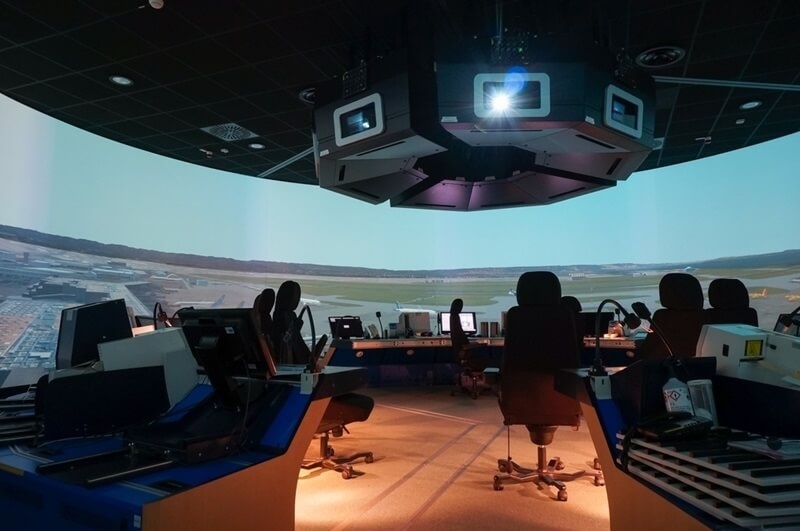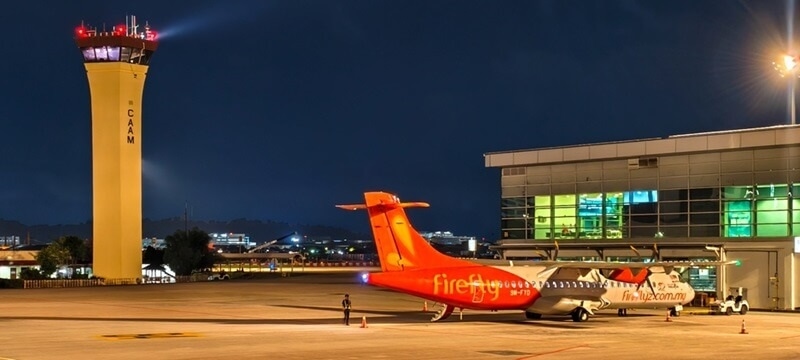
Air travel is a normal thing in our lives, but very few individuals ever consider the little-known system that ensures thousands and thousands of flights go uncrashed on a daily basis. It takes a network of operations and highly trained professionals to ensure that the planes are on track regarding takeoffs and landings, although all this is behind the scenes. This system is referred to as air traffic management, and it plays an important role in the prevention of accidents, delays, and the safe arrival of passengers to their destinations. Today, we shall discuss how flights are handled in the airports, the use of air traffic control towers, the technology, and the functions of the air traffic controllers who work around the clock to ensure the skies are safe.
The safety of air travel depends on air traffic management. It entails planning and coordinating the movement of aircraft on the ground and in the air. Failure to control air traffic properly may cause havoc in the skies that results in delays, near accidents, and even hazardous conditions. In the USA, airports daily process thousands of flights and it is air traffic management which ensures that the flight has clear and safe route between the takeoff and landing.
The air traffic controllers are the custodians of the sky. They track planes with the help of radar and communication systems and provide pilots with instructions to ensure that safe distances are observed. The job of an air traffic controller is full of concentration, the ability to think fast, and the ability to communicate well. All their directions, be it in speed, altitude, or direction, are vital to the safety of all people on board.
There are numerous systems and procedures under air traffic services, which assist in controlling flights. Such services include flight planning, weather monitoring, route management, and emergency response planning. Airports are dependent on such services to organize the time when a plane takes off or lands, and ensure that no planes are too close to each other.

Air traffic control towers are the heart of airport operations. They provide controllers with a complete view of the airfield and surrounding airspace. From these towers, controllers can see airplanes taxiing on runways, taking off, and landing.
Air traffic controller towers operate 24/7. Controllers use a combination of radar screens, binoculars, and advanced software to track aircraft movements. They communicate directly with pilots to guide them safely from gate to sky and back again. It may seem simple from the outside, but coordinating dozens of planes at the same time is a complex task requiring sharp skills and teamwork.
One of the most important tasks in a control tower is communication. Controllers provide instructions for speed, altitude, and route adjustments. Pilots must follow these instructions precisely to maintain safe distances from other planes.
Also read: 10 Airport Traveler Services You Should Know For Your Flight
Modern air traffic management relies heavily on technology. Advanced tools help controllers monitor flights, predict potential problems, and respond quickly to emergencies.
Before controllers manage live flights, they spend years training in air traffic control simulators. These simulators replicate real-world airport scenarios, including bad weather, heavy traffic, and emergency situations.
Radar systems are vital for monitoring aircraft positions. These systems track planes in real time and alert controllers if two planes are on a potentially dangerous path. Modern radar technology can even track small changes in altitude and speed, giving controllers the precise information they need to prevent accidents.
In addition to radar, airports use automated systems that can warn controllers about weather changes, runway obstructions, or traffic congestion. These tools act as extra eyes and ears, helping controllers make faster and more accurate decisions.
No controller works alone. Air traffic control is a team effort, requiring smooth collaboration between multiple professionals.
Controllers in the tower coordinate with ground staff who manage gate operations, baggage handling, and runway maintenance. This coordination ensures that planes can taxi safely, avoiding obstacles or other aircraft.
Controllers and pilots share the responsibility of safe air travel. Controllers give instructions, and pilots execute them while navigating unpredictable weather, mechanical issues, or emergencies. This relationship requires mutual trust and precise communication.
Suggested reading: Enjoy the Perks & Programs With Free Airport Lounge Access
This is even more difficult when it comes to peak hours in air traffic management. The hectic airports are capable of accommodating hundreds of aircrafts within a span of a few hours and all the aircraft must be counted to prevent delays or collisions.
The controllers sequence the takeoffs and landings of flights in order to handle the high traffic. This would entail allotment of runways, separation of departures, and arrangement of arrival times. Bottlenecks can be avoided by making even minor changes that ensure the safety of flights.
Bad weather is an extra complication. Strong winds, fog, and heavy rain may compel the controllers to reroute flights or postpone departures. The air traffic management systems also offer real-time weather updates, and thus the controllers can make sound decisions and direct the pilots through the air.
In the background of all the technology and processes, there is also required human skill and judgment. The controllers operate under the pressure of enormous magnitude, and they make the instant decision that has an impact on the lives of hundreds of people.
The profession of an air traffic controller is stressful. All it takes to make a big mistake is a single mistake. Nevertheless, the pressure does not affect controllers who remain calm and concentrate based on training, experience, and teamwork as a means of handling the confusing situations.
The air traffic management is always changing. Controllers should be informed of new regulations, upgrades in technology and best practices. Continuous training makes them be able to cope with any circumstances effectively and safely.
Explore more: Best Business Class Travel Services to Book in 2025
Aviation Air traffic management is an interesting and critical aspect of aviation. Starting with the air traffic control tower and all the way up to the air traffic control simulators, all these components are interrelated to ensure the flight is safe, efficient, and reliable. Air traffic controllers, under the guidance of sophisticated technology and air traffic services, perform their massive responsibility with competence and commitment. Whenever you board a plane next time, you must keep in mind that there are thousands of professionals working behind the scenes to ensure that your travel is smooth and safe. The system might be behind the scenes, yet it is the blood flow of safe air travel, and the skies of the world are arranged, and our flights are safe.
This content was created by AI